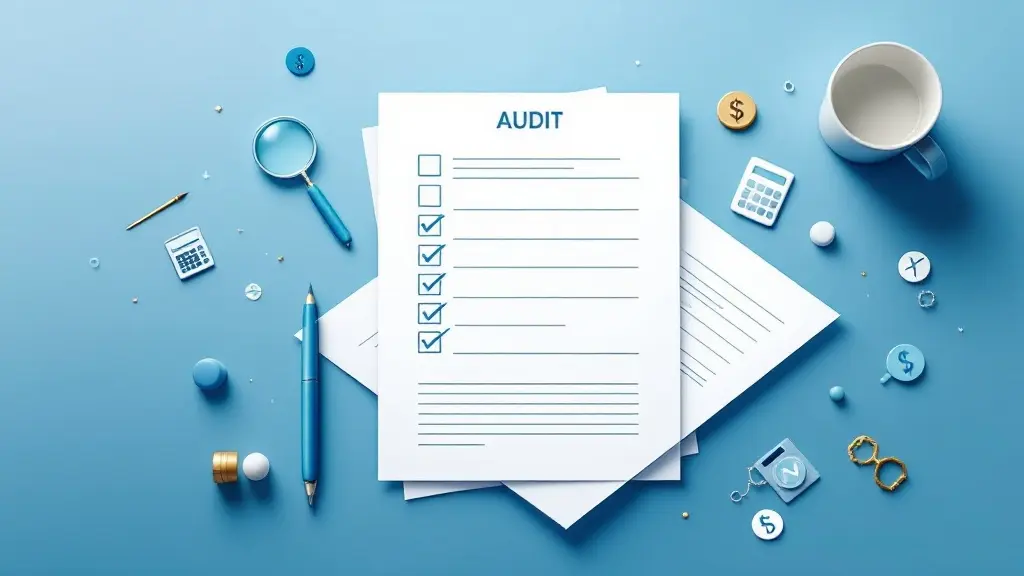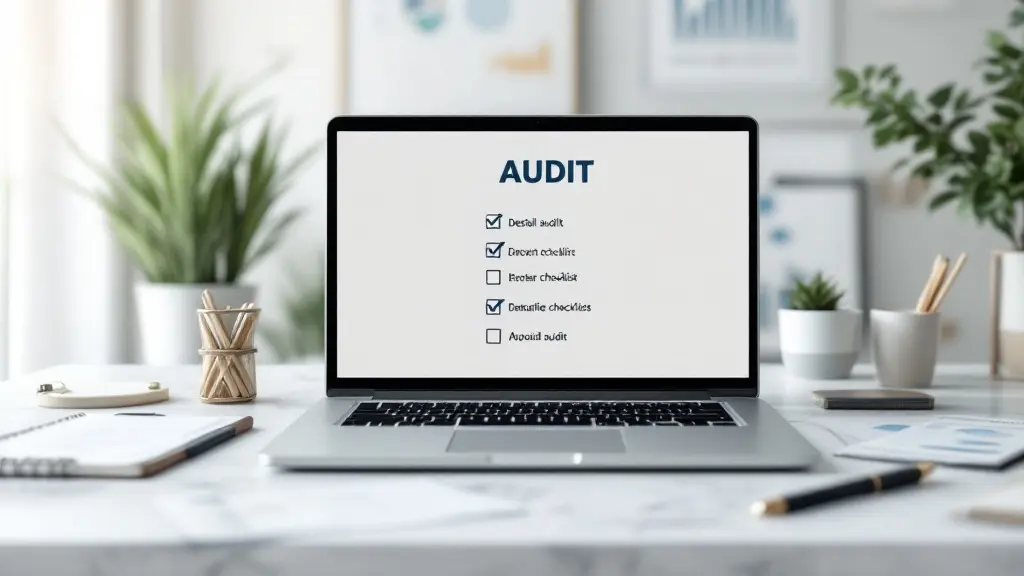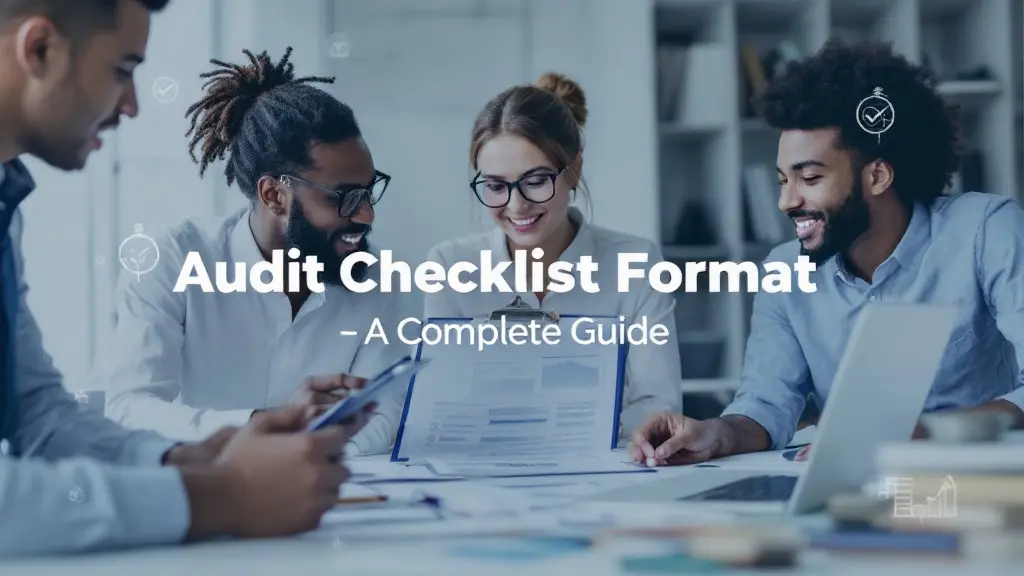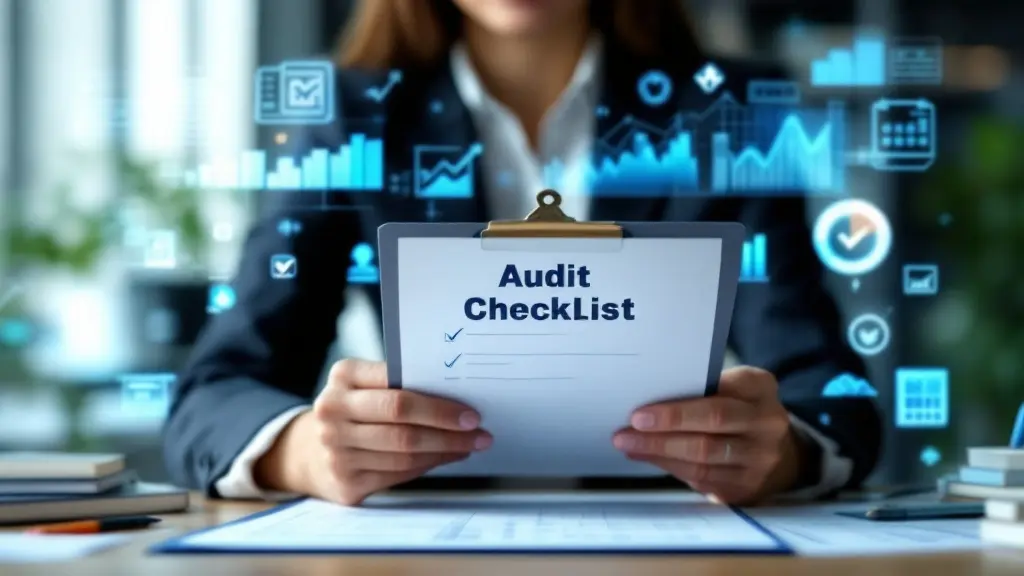The Ultimate Audit Checklist Template for Businesses: A Step-by-Step Guide
Table of Contents
Most Read
[fusion_dropcap class="fusion-content-tb-dropcap"]I[/fusion_dropcap]ntroduction
An audit is a critical process for businesses to ensure financial accuracy, compliance, and transparency. Whether you are conducting an internal or external audit, having a comprehensive audit checklist template can help ensure that nothing important is overlooked. In this blog post, we will provide you with a detailed audit checklist template, along with tips and insights on how to make the audit process as smooth as possible.
What is an Audit Checklist?
An audit checklist is a tool that helps auditors systematically review and evaluate various areas of a business or organization’s financial records, operations, and compliance practices. It serves as a guide to ensure that all necessary steps are taken during the audit process and that the audit is thorough, accurate, and aligned with industry standards.
Why Do You Need an Audit Checklist?
- Ensures Comprehensive Review: An audit checklist provides a structured approach, making sure no detail is missed.
- Enhances Efficiency: It saves time by organizing tasks in a sequential order.
- Improves Accuracy: By following a checklist, auditors are less likely to overlook critical areas.
- Helps with Compliance: It ensures that businesses are following all legal and regulatory requirements.
Key Elements of an Effective Audit Checklist Template
An audit checklist template should cover all areas necessary to conduct a thorough audit. Here are the key elements it should include:
1. General Information
- Audit Objective: Define the purpose of the audit (e.g., financial audit, compliance audit, operational audit).
- Audit Scope: Clarify the scope of the audit, including which departments, transactions, or activities are being audited.
- Audit Team: List the individuals involved in the audit process, including their roles and responsibilities.
- Timeline: Establish the timeline for completing the audit.
2. Pre-Audit Planning
Before diving into the details of the audit, it’s important to lay the groundwork. The pre-audit planning phase ensures that the auditor is properly prepared.
- Review Previous Audit Reports: If applicable, review reports from previous audits to identify areas that need follow-up.
- Define Audit Objectives and Scope: Clearly outline the objectives of the audit, whether it’s to review financial records, compliance with regulations, or operational efficiency.
- Request Documents and Information: Ensure that all necessary documents, such as financial statements, contracts, and policies, are available for review.
3. Financial Audit Checklist
For businesses undergoing a financial audit, it’s essential to have a comprehensive financial audit checklist. This ensures that the financial records are accurate and in compliance with accounting principles.
- Revenue Verification: Ensure that all revenue streams are recorded accurately, including sales, services, and other income sources.
- Expense Verification: Check for proper documentation and legitimacy of all expenses, including operating costs, employee salaries, and business-related expenditures.
- Bank Reconciliations: Compare the company’s bank statements with its financial records to identify any discrepancies.
- Inventory Checks: Perform an inventory count to ensure that the physical inventory matches the records.
- Fixed Assets: Verify the existence and proper recording of all fixed assets, including machinery, vehicles, and equipment.
- Liabilities and Loans: Ensure that all liabilities, loans, and debts are accurately recorded and up to date.
4. Compliance Audit Checklist
In today’s regulatory environment, businesses must comply with various laws and regulations. A compliance audit checklist helps ensure that all legal requirements are met.
- Tax Compliance: Verify that the business is complying with local, state, and federal tax laws, including income tax, sales tax, and payroll taxes.
- Regulatory Compliance: Check for adherence to industry-specific regulations, such as those related to data protection (GDPR), environmental standards, or health and safety.
- Licenses and Permits: Ensure that all necessary business licenses and permits are up to date.
- Employee Compliance: Ensure that labor laws are being followed, including employee benefits, wages, and working hours.
5. Internal Controls and Risk Management
Internal controls help ensure that the business’s financial records are accurate and its operations are efficient. This section of the audit checklist focuses on assessing the strength of these controls.
- Segregation of Duties: Verify that critical tasks, such as record-keeping and approval of transactions, are divided among different employees to prevent fraud.
- Approval Processes: Ensure that all significant financial transactions are approved by the appropriate authority within the company.
- Access Controls: Check that access to sensitive financial and operational data is restricted to authorized personnel only.
- Risk Management Procedures: Assess the company’s risk management practices, including how risks are identified, evaluated, and mitigated.
6. Post-Audit Actions
Once the audit is complete, it’s important to address any findings and make necessary improvements. The post-audit phase ensures that the business takes action on the audit results.
- Review Findings: Go over the audit findings with the relevant stakeholders to understand any discrepancies or areas of concern.
- Create an Action Plan: Develop a plan for addressing any issues identified during the audit, including corrective actions or improvements to internal controls.
- Follow-up Audits: Schedule follow-up audits to ensure that the necessary changes have been implemented and that the company remains compliant.
How to Use an Audit Checklist Template
Using an audit checklist template is straightforward, but it’s important to tailor the template to fit your organization’s needs. Here’s how you can effectively use an audit checklist:
- Customize the Template: While most audit checklists cover similar ground, customize the template to reflect the unique aspects of your business, such as specific compliance requirements or internal procedures.
- Assign Responsibilities: Clearly assign tasks to different members of your audit team. This ensures accountability and helps the audit progress smoothly.
- Review and Update: Regularly review and update the checklist to account for any changes in regulations, business operations, or internal controls.
Conclusion
An audit checklist is an invaluable tool for businesses looking to maintain financial integrity, ensure compliance, and improve internal controls. By using a comprehensive and well-structured audit checklist template, you can make the audit process more efficient, accurate, and effective. Whether you’re conducting an internal audit or preparing for an external audit, following a checklist ensures that all critical areas are thoroughly reviewed.
Don’t forget that the audit process is an opportunity for your business to improve, so use it to your advantage! By adhering to best practices and making necessary adjustments, you can enhance your company’s operations, minimize risks, and ensure long-term success.
Call to Action: Are you preparing for your next audit? Download our free audit checklist template and get started on ensuring your business’s financial health and compliance. If you have any questions or need assistance with your audit process, don’t hesitate to contact us at FinTax24. We’re here to help!









